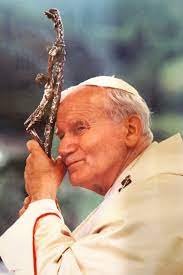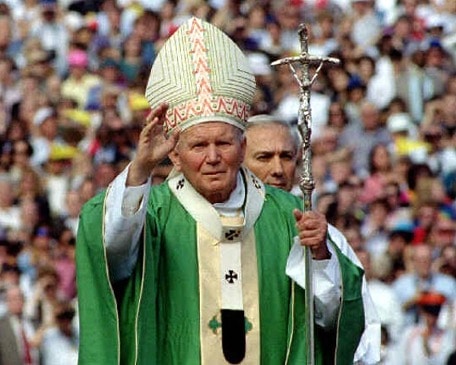Who was John Paul II?
John Paul II is greatly remembered for his spiritual and political role in the collapse of communism in Central and Eastern Europe. The impact that his words and courage brought to Poland during his 1979 pilgrimage eventually spread to various nations throughout the whole world. He is also greatly remembered for his efforts to bring a greater sense of peace and cooperation between different religions and countries. He was the first non-Italian, Slavic Pope to be elected to the papacy in 455 years. Before John Paul II earned his title as Pope, he was known as Karol Wojtyła. He faced great hardships during his early life and lost his mother, brother, and father all by the young age of 20. In addition to this, he grew up in Poland during the occupations of the Soviet and Nazi regimes and knew firsthand what it meant to live under oppression. Despite the difficulties he faced, young Wojtyła never lost his faith and fate would guide him to choose the consecrated life. He would move up the ranks from a priest to later become an Auxiliary Bishop, Archbishop, Cardinal, and finally, the Holy Pope. John Paul II’s papacy lasted 26 years and was the third-longest in history. He passed away on April 2, 2005, but his legacy and work continue to live on.
1. Throughout his Papacy, John Paul II visited 129 countries. He also spoke 8 languages fluently.
John Paul II was the first Pope in history to travel around the world at such an extensive rate. He made 104 overseas tripsduring his papacy and managed to visit 129 countries; this is more than all his previous predecessors combined. According to an estimate, these trips totaled approximately 775,000 miles or 31 times around the earth.[1] He had a great love for people and desired to make a connection with people from all over the world. He earned his title as the “Pope of the People” because of his mission to become a universal church leader, his various excursions around the world, and his ability to speak multiple languages. People from various nations felt a connection to him because he was able to speak the gospel in their native tongue. John Paul the II was so talented that he spoke 8 languages fluently, various dialects, and multiple other languages on a proficient scale. The languages he could speak fluently included: Polish, Latin, Italian, Spanish, Portuguese, French, English, and German.[2]
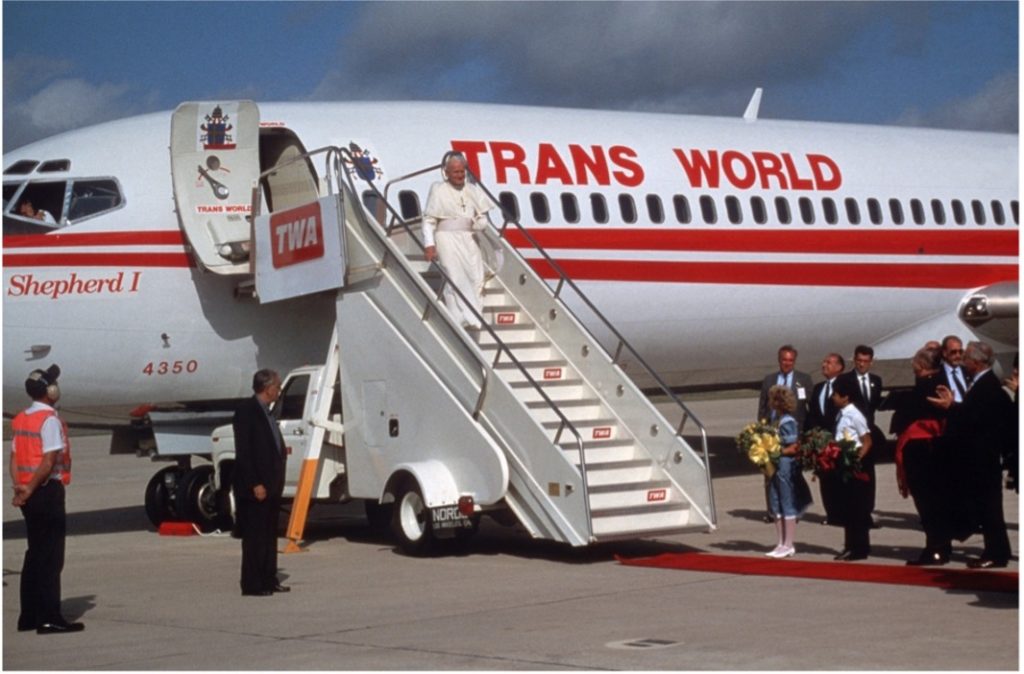
2. John Paul II formed a “Holy Alliance” with President Ronald Reagan to combat communist tyranny and oppression.
The term of the “Holy Alliance” was coined in Time magazine piece written by Carl Bernstein in 1992.[3] However, other experts would argue if “Holy Alliance” was a correct way to describe the relationship between the two. Instead, some prefer to describe it as a partnership that was formed out of sharing a common battle with communism. Regardless of one’s take of their relationship, both saw Soviet communism as a great source of evil in the world which was destroying human freedom and dignity. John Paul II focused more so on proclaiming the Gospel while Reagan had a mission to, “to protect freedom . . . to protect it from Communist tyranny.”[4] In order for either of their missions to succeed, it was critical for the USSR to be taken down. Thus, the two joined forces to take down the Evil Empire together and battle it from both a spiritual and political perspective. However, their story goes deeper than just being two leaders on the world stage. Paul Kengor describes their relationship as one that was part of a “Divine Plan” orchestrated by God. Both had a strong faith, uncanny similarities growing up, a similar charisma, and both were saved from death only 6 weeks apart. The events that occurred within their lives makes it seem as if they were destined to create a partnership or “Holy Alliance” to free millions of people from the oppression of communism.
3. Reagan’s security advisors worked with the Vatican to share and exchange intelligence with the Pope. They used a unique code name known as cappuccino to signal to one another it was time for a meeting.
In order for the “Holy Alliance” to function as effectively as possible, Reagan and Pope John Paul II needed the assistance of their counterparts. Bill Casey from the CIA, Bill Clark from the National Security Council, and Archbishop Pio Laghi, who served on behalf of the Vatican as the “apostolic nuncio in Washington”, were three figures who formed a partnership of their own.[5] The three would sometimes meet as often as once a week to exchange critical intelligence and information regarding new developments in the Cold War. They would be particularly concerned with issues relating to Poland; however, other general topics affecting Rome and D.C. were also discussed. This information would then be channeled back to either the Pope or Reagan. Due to the nature of the information, they would meet in person and no note takers were allowed to be present during the meetings. As they were also cautious not to exchange information over the phone, Clark or Casey would signal they needed to communicate with Archbishop Laghi by saying, “Would you like to have some cappuccino?”[6] This derived from the fact that Pio Laghi would always be sure to prepare good quality, Italian coffee when meeting with Clark and Casey. Thus “code name cappuccino” came about.[7]
4. John Paul II was the only pope to have once worked as a laborer.
During the Nazi occupation of Poland, all males between the ages of 14 and 60 were required to have a job in manual labor if they wished to avoid deportation. [8] Karol Wojtyła started working at the Zakrzówek quarry where he was forced to break apart limestone and “haul wheelbarrows full of crushed limestone from inside the quarry to a rail car.” [9] At times it would be so cold that Karol and his friend would have to put on petroleum jelly all over their faces so their skin wouldn’t freeze off. Temperatures could get as low as – 22 Fahrenheit (-30 Celsius).[10] After three months of this labor enduring work, Karol was promoted to a risker position known as “assistant to the blaster” where he was constantly around dangerous conditions and high explosives “used to break apart large pieces of the quarry walls.”[11] Wojtyla later writes about the lessons physical labor taught him in his book Gift and Mystery, “Having worked with my hands, I knew quite well the meaning of physical labor. Every day I had been with people who did heavy work. I came to know their living situations, their families, their interest, their human worth, and their dignity.” [12] He concluded that work, even heavy physical labor, was “a participation in God’s creativity” and always had a purpose.[13] It is only when work results in exploitation and degradation to the fellow man that it becomes evil. Today, the Zakrzówek quarry can be better identified as the Zakrzówek lagoon since the quarry became flooded with water. It is now a popular tourist attraction known for its beautiful views and relaxing scenery.
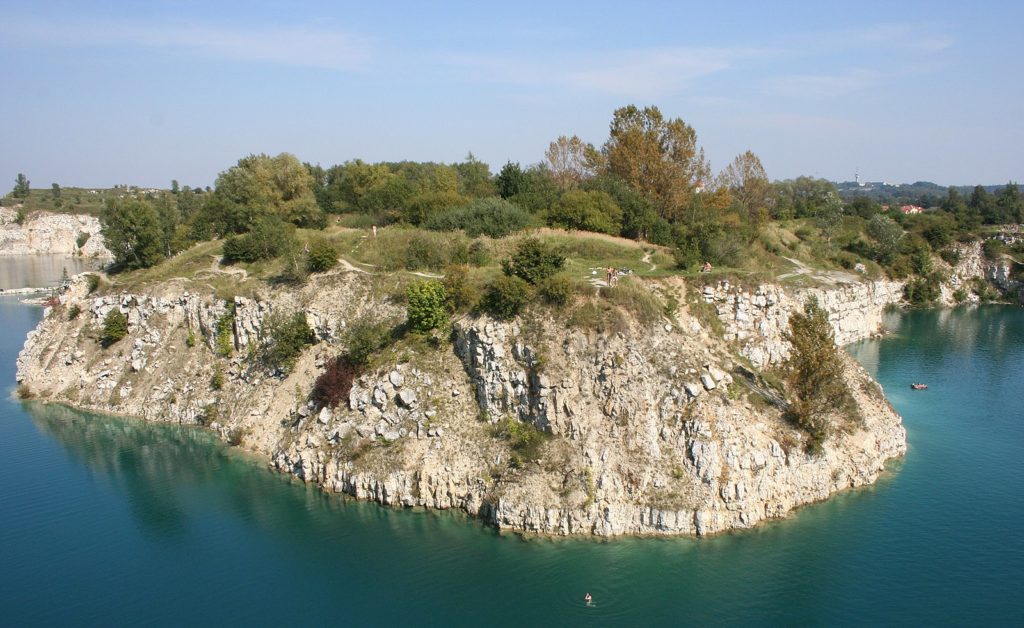
There is even a memorial plaque located in the deep waters of the former Zakrzówek quarry to commemorate John Paul the II for his work here as a young man. The plaque states:
“In this quarry worked physically one of the greatest Poles, late Karol Wojtyla Pope John Paul II — Beneath your care, we give ourselves, the divers”
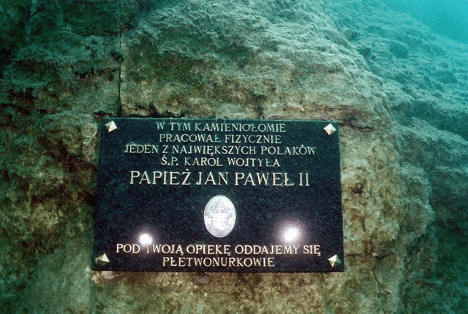
Source: http://aquamaster.pl/nurkowiska/malopolskie/zakrzowek/zakrzowek.html
5. Throughout John Paul II’s 1979 pilgrimage to Poland, around 1/3 of the population, about 10 million people, came to see him in person during his 9-day visit.
After Pope John Paul II officially became Pope in 1978, he decided one of his first visits would be to his homeland of Poland. Unfortunately, the communists in power were greatly against his visitation and tried to do everything they could to stop him from visiting. Brezhnev even wanted Pope John Paul II to lie to the public and state he wouldn’t be coming because of a sudden illness.[14] In the end, the communist efforts failed, a crowd of about 300,000 Poles were present in Warsaw’s Victory Square during John Paul II’s first homily and stop of the pilgrimage.[15] This amount would only grow as an estimated 10 million Poles went to see Pope John Paul II speak throughout the country during his 9-day pilgrimage.[16] The Poles began to realize just how greatly they outnumbered the communists in charge. Furthermore, the words John Paul II spoke to these various crowds gave the Polish people hope that this time in their history would only be momentary. He inspired both Catholics and non-Catholics alike to not live in fear of the communists and to have the courage to voice their opinions. Without John Paul II’s words of encouragement, peaceful resistance, and message of hope, the reign of communism could have lasted for decades longer or ended violently.
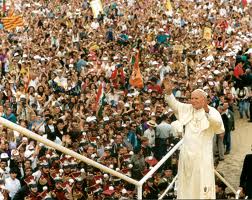
6. The communists surprisingly allowed the Pope’s 1979 visit to be televised.
During John Paul II’s 9-day pilgrimage, millions of people were watching his homilies at home in front of their television screens. Usually, the communists were against the Church using the media, but they hoped that if the Pope was televised, fewer people would show up in person to his homilies. This obliviously did not work as millions accumulated throughout the 9 days to see him. However, the reported television coverage of John Paul II’s homilies was of poor quality. The communist coverage would rarely focus on the Pope speaking and if they did it was a very zoomed-in image of him. Furthermore, they refused to show the massive size of the crowds he gathered or the young people that were present, but rather preferred to panel the cameras onto “the religious, handicapped, and elderly” people present.[17] All of this proves the communists feared the power Pope John Paul II had to influence people.
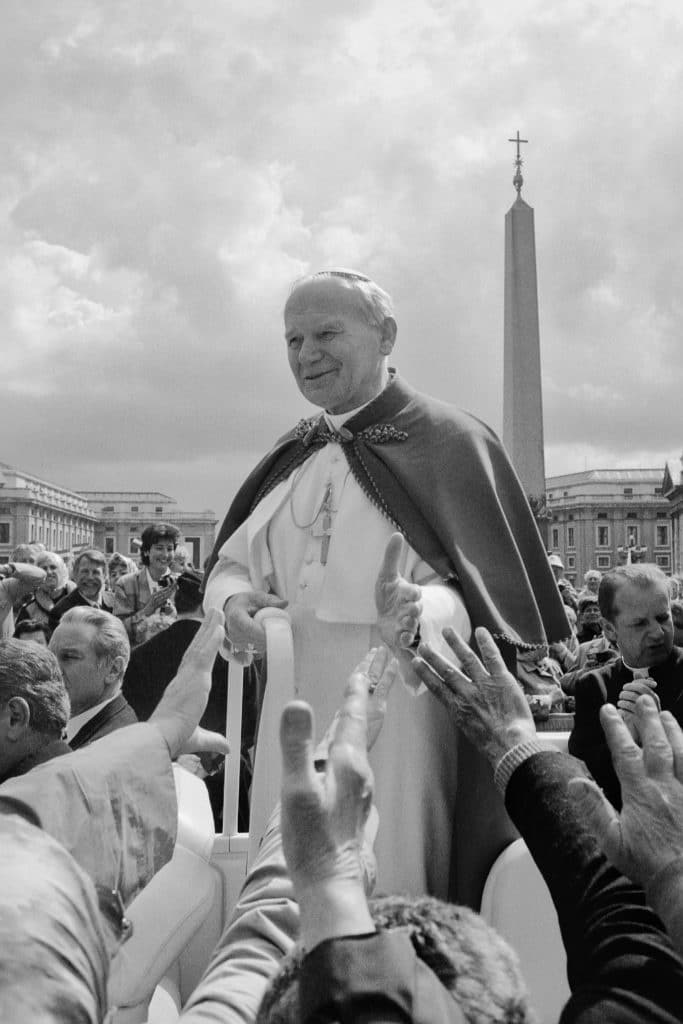
7. John Paul II’s 1979 pilgrimage ignited the creation of the Solidarity Movement, the first free trade union in the Communist Bloc.
John Paul II’s message of hope during the 1979 pilgrimage awakened the Poles longing for freedom and ultimately paved the way for the creation of the non-violent social movement and trade union known as Solidarity or Solidarność. The movement had originally started as a protest demanding higher wages and better working conditions among the Lenin shipyard workers in Gdańsk. However, once the workers recognized the power of their protests, it transformed into a revolutionary social movement that advocated for the rights of the entire country. Millions of Poles came together from every part of the country to promote universal human values and freedom from the oppression of the communist government. Solidarity went through many stages, first as a legal trade union, later as an underground social movement due to the declaration of martial law, and eventually became a revolutionary force that overthrew the communist government. The Union formed with the help of a common man; a shipyard electrician known as Lech Wałęsa. He stated that had John Paul II not visited Poland in 1979, there would be no Solidarity movement as there had been many tries before 1980 to start a similar labor union. Ultimately, Solidarity paved the way for a democratic and free Poland while also eventually inspiring the rest of Central and Eastern Europe to make a change.
8. Wojtyła studied the Communist Manifesto more intensely than the communists themselves.
Having lived through communism, Wojtyła understood firsthand the reality of Marxism. However, his experience didn’t stop there, he put it on himself to study the philosophy and the inner workings of Marxism. He once was reported to have even walked “into the papal conclave with a Marxist philosophical journal in hand.”[18] Furthermore, one of his biographers writes that communists dreaded negotiating with Wojtyła because he understood Marxism better than the communist party officials. The communist prime minister of Poland, Wojciech Jaruzelski, admits that when he met John Paul II in 1983 his “legs were trembling and knees were knocking together.” [19] John Paul II proved he was different from other leaders in the church because of his willingness to fight against the ideals of Marxism and his continued courage to stand up for the church. The communists knew that if they were to speak up against Wojtyła they would need to have their arguments adequately prepared.[20]
9. The Communists actually wanted Karol Wojtyła to be elected as Archbishop.
The Communist Party still allowed the Polish church to function despite their constant efforts to undermine and penetrate it. They permitted the church to nominate candidates for leadership positions but still held the power to reject potential candidates they didn’t approve of. Back when Karol Wojtyła was a priest and aspiring to become a bishop, the communist party greatly miscalculated his character and thought he would be a weak bishop. They believed that Wojtyła “expressed little interest in mundane politics and could be manipulated easily.”[21] The chief ideologist of the Polish communist party went as far as vetoing seven potential bishops until Karol Wojtyła became the last and final option.[22] Little did they know they would elect the man who would years later help topple down the regime they stood proudly for.
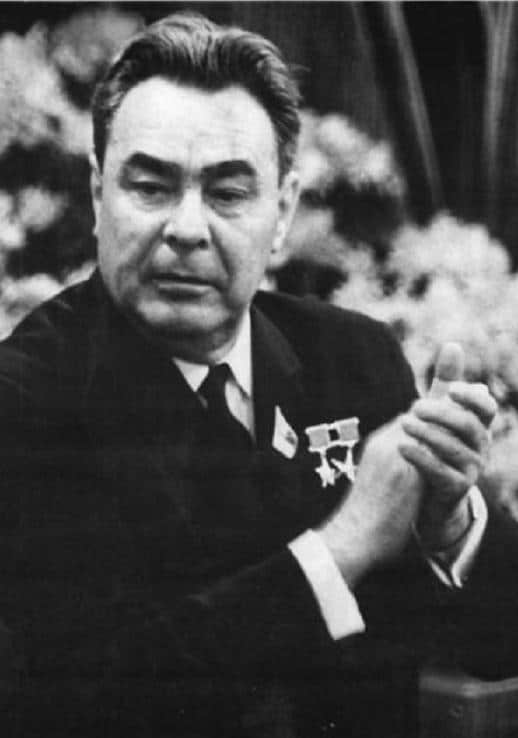
10. He survived being run over by a Nazi truck at 24 years old.
On February 29, 1944, Wojtyła was walking back home from his shift at the quarry when he was suddenly struck from behind by a speeding German truck. A woman riding the tram, later identified as Józefa Florek, saw Wojtyła’s almost lifeless body lying in the road and immediately went to his aid. Mrs. Florek managed to flag down a German officer who surprisingly helped. The two cleaned off the blood from Karol using “some muddy water from a nearby ditch.” [23] After, the officer directed a passing lumber truck to take semiconscious Wojtyła to the local hospital. In the end, the accident caused him to bear “a severe concussion, numerous cuts, and a shoulder injury.” [24] During his two weeks in the hospital, Wojtyła became sure that surviving this incident was a clear sign to join the priesthood.
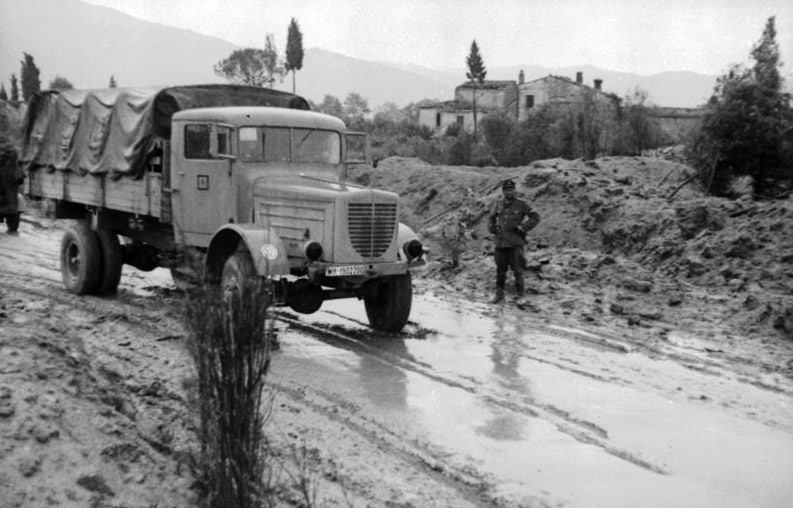
11. Young Karol Wojtyła successfully hid from the Nazi soldiers and avoided what could’ve been a fatal arrest.
The second time Wojtyla’s life was spared was on August 6, 1944, after the start of the Warsaw Uprising. There was a roundup ordered by the German governor of Poland to arrest all strong and able-bodied men to eliminate the odds of a Warsaw Uprising from happening in Kraków.[25] Sadly, it is estimated that around 6,000 teenage boys and men were arrested on this day known as “Black Sunday” and later sent to concentration camps or had to endure forced labor.[26]Karol Wojtyła at this time was living in a basement apartment. During the roundup, he was alone at home in the front room of his apartment with the door closed as Nazi soldiers went room by room searching. He was praying in his normal position of laying on the ground face down, arms out, and body positioned so he would resemble the cross.[27]While he was in prayer, a guard stopped in front of his room, and decided without checking, that the house was empty. Wojtyła’s life was miraculously spared a second time.
12. John Paul II forgave the man who shot him in the assassination attempt.
On May 13, 1981, Pope John Paul II survived an assassination attempt by a Turkish gunman known as Mehmet Ali Agca. He was riding in his popemobile and greeting the pilgrims in St. Peter’s Square when four bullets struck him in the abdomen, left index finger, and right arm.[28] From his hospital bed, John Paul II forgave Ali Agca and sent out a recording urging others to do the same. After recovering, he decided to visit the assassin in jail and even prayed with him in his prison cell. Although the KGB’s involvement was never officially proven, officials and friends close to the Pope claim they have no doubt the Soviets were behind this assassination attempt. Cardinal Dziwisz, the Pope’s good friend and secretary, stated, “Don’t all roads, however disparate they are, lead to the KGB?”[29]
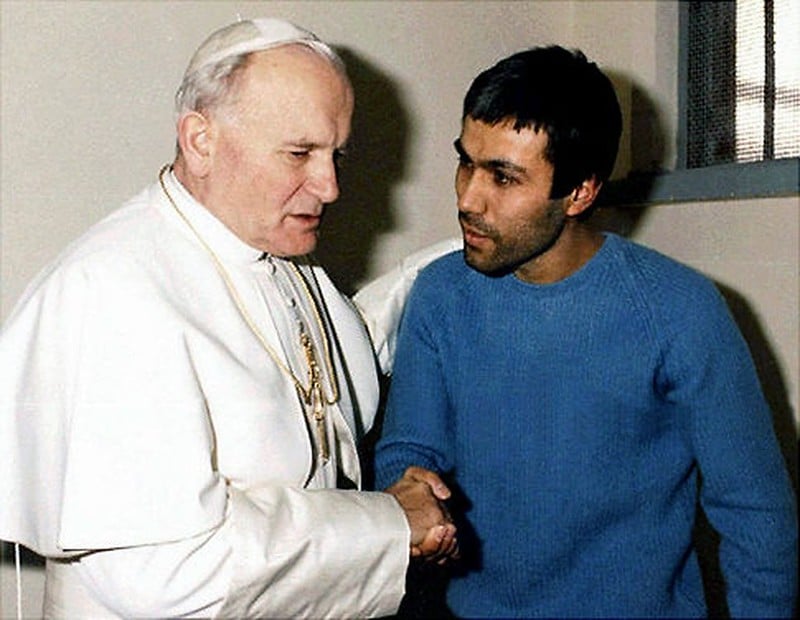
13. John Paul II created the World Day Prayer for Peace.
On October 27, 1986, John Paul II started the tradition of an interfaith peace gathering where leaders from various faiths would come together in Assisi, Italy, and pray for peace in the world. However, this seemingly peaceful act did not come without controversy. There was a debate on how Christians, Jews, Muslims, Buddhists, Shintoists, and other faiths could come together to pray when their fundamental beliefs were so different from one another. One main concern voiced before the gathering was that the joint prayer would be “syncretistic or reductionist.”[30] The Pope then explained that“we were not gathering “to pray together,” but we were gathering “to be together to pray.”[31] He believed in showing the world that religion does not have to be a cause of conflict and that peace can present itself in a different way which is “not a result of negotiations, political compromises or economic bargainings.” [32] Ultimately, John Paul II wanted the world to witness prayer, peace, and collective understanding during the high tensions of the Cold War.
14. The First Pope to visit a mosque and pray with Muslims.
John Paul II had a great love for all people, religions, and nations. It was important for his mission to extend outside of the Catholic Church and to connect, or repair, relations with all faiths. During his second visit to the Middle East, on May 6, 2001, John Paul II entered the Olmayyad Mosque in the center of Damascus to show his respect for the Islamic faith. Aware of the conflicts the Christians and Muslims faced for centuries, he hoped the sides could reach mutual forgiveness and move forward as partners. Years prior, in 1985, John Paul II also attracted a crowd of 80,000 Muslim Youth during his speech in Morocco where he highlighted the similarities between the two religions. This is just one example of how John Paul II was willing to keep an open dialogue with other faiths and his great respect for religious freedom.
15. The first Pope to make an official visit to a synagogue.
Young Wojtyła saw firsthand the discrimination that Jewish people were facing during the Nazi occupation and grew up witnessing the sudden disappearance of his Jewish friends and neighbors. During his papacy, John Paul II went to great lengths to try and improve the relations between Jews and Catholics. On April 13, 1986, he became the first Pope to visit a synagogue since the days of Saint Peter.[33] At this visit, he referred to the Jewish people as the “elder brothers” of Christians and focused on common themes between Judaism and Christianity.[34] He also condemned anti-Semitism and commemorated the lives of the innocent people lost in the Holocaust during the visit. He later would make even greater efforts to strengthen Jewish-Christian through establishing diplomatic relations between the Vatican and Israel.
16. “Uncle Chuck” loved the outdoors.
John Paul II had a great love for nature and found value in connecting with God’s creation. Before he became Pope, Karol Wojtyła led covert outdoor excursions with his various youth groups where he would take them hiking, camping, skiing, and kayaking. During these trips, Father Wojtyla acquired the name Wujek Lolek or Uncle Chuck. This name was used for the safety of the youth group since it was illegal for priests to be spotted out in public with their students. The name Wujek (uncle) Lolek seemed to make it appear as if he was just on a trip with his nieces and nephews. He would use these excursions as an opportunity to teach his young parishioners about the faith by immersing them in an environment where God’s greatness was present all around them. One camp counselor in Colorado who leads “Camp Wojtyła” is quoted saying, “He wanted people to experience the freedom that Christ is, and one of those ways to experience that freedom is being in the freedom of the wilderness.”[35]
17. Wojtyła would ski until he was 73 years old.
Wojtyła’s favorite outdoor activity by far was skiing. He continued to ski until his health stopped him from doing so and he was required to have hip surgery. Luckily, this wasn’t until 1987 at 73 years old, “nine years into his papacy.”[36] His talent earned him the name of “Daredevil of the Tatras.”[37]
18. John Paul II knew that communism was incompatible with human spirituality and human nature.
John Paul II took down communism not by attacking the communists directly, but rather by restoring the human dignity and human spirituality in people which had been brutally taken away from them. Through discussing the value of man and human nature as God intended in his various homilies, encyclicals, and public speeches, he was able to point out the Marxist ideology’s fatal flaws and logical fallacies which went against man. He focused on explaining important topics such as the value of human life, the family, the right to freedom, work, and private property. Ultimately, John Paul II recognized that communism does not provide the conditions that allow human beings to live out life as they were called to by God. The lack of religious freedom in communism is the first fatal flaw of this system. This atheistic Marxist ideology suppresses the belief in God and discriminates against all religions. John Paul II believed that religious freedom was a fundamental human right and “an essential requirement of the dignity of every person.”[38] Suppressing people from learning about God or practicing their faith was to deny people of living in the truth. Accordingly, Marxism teaches that economics, money, and material goods are the “key” to life. A Marxist-communist utopia states that “once the economic problem would be solved, the human problem would be solved accordingly.”[39] John Paul II knew that life cannot be fulfilled through material goods alone and that having a relationship with one’s Creator is necessary for a fulfilling life. He explains how God is the highest aim in life for various religions in his first encyclical Redemptoris Hominis (Redeemer of Humankind), “…though the routes taken may be different, there is but a single goal to which is directed the deepest aspiration of the human spirit as expressed in its quest for God …”[40]
19. The Pope fought against treating man as a means to an end to serve the Communist State.
Marxism goes against human nature and human dignity in the field of human labor. In the communist system, humans are seen as mere tools in the line of production. Man is no longer valued as an individual with a specific purpose and destiny but as a mere worker for the State and the collective. John Paul II teaches that each person is a unique individual and should never be used by another person or entity such as the State to achieve its ends. John Paul II recognizes the danger of using a person as an object and writes about it in his first published book, Love and Responsibility, “Anyone who treats a person as the means to an end does violence to the very essence of the other, to what constitutes its natural right. Obviously, we must demand from a person, as a thinking individual, that his or her ends should be genuinely good, since the pursuit of evil ends is contrary to the rational nature of the person.” [41] John Paul II witnessed firsthand the tragic effects of when society degrades and exploits the human person.
20. He was a great actor and had a passion for the arts.
Before Wojtyła decided on his vocation, he always felt a calling to become an actor. Growing up, Wojtyła was attracted to Polish literature, art, and theater. He started by playing leading roles in his high school plays and later became an actor for the Rhapsodic Theatre, a clandestine theater created by Wojtyła, his theatrical mentor, and his fellow actor friends. The Rhapsodic Theatre was not a physical building but was rather an act that took place in different people’s apartments to show a cultural, artistic resistance to the regime.[42] Wojtyła was not only an actor for the Rhapsodic Theatre, but he would also occasionally prepare scripts and even direct the plays. Throughout his life, he wrote 6 plays in total and various poems. The themes of his works range from topics such as personal life struggles and joys to appreciating the Divine Providence and God’s mystery. To avoid attracting attention from the communist regime, all Wojtyła’s playwrights and poems that were written and published before October 1978 (the time he was elected as pope) used the pseudonym Andrzej Jawień, Piotr Jasień, AJ, or Stanisław Andrzej Gruda. His works can help us better understand who he was, what he valued in life, what influenced him and moved his soul, and essentially how he came to be the prominent figure he was. It is also evident that his time in theater greatly contributed to him becoming a powerful speaker and writer during his papacy.
